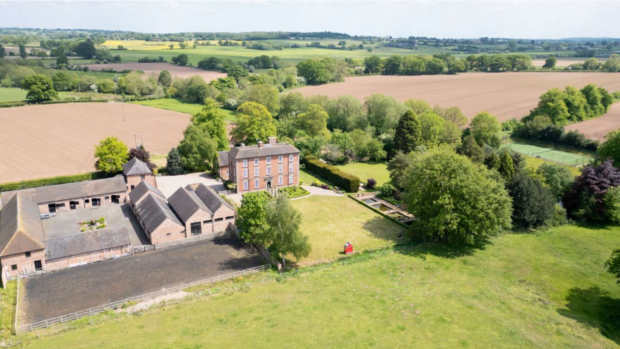“Seeking spacious stall with sturdy walls in single-gender neighbourhood.” If a stallion could place a “property wanted” advert, it would probably read like this. The problem is, it’s not easy to find a good home for stallions.
“In older yards a box might be 10x12ft, sometimes with relatively low roof height,” says Paul Dixon of Robert Leech & Partners. “Many equestrian properties fall into this category, which is why the stallion yard buyer finds life difficult.”
Obviously, requirements vary depending on whether you are looking for a professional Thoroughbred stud, a home with stabling for a single pony stallion, or anything in between.
For professional studs, Lindsay Jarrett of Stags in Dulverton believes location is the most important purchase criteria.
“The stud must be easy to reach from major trunk roads, and also have good access to the stableyard because nobody will want to unload their precious mare a mile away from the yard and lead her up muddy, bumpy tracks.”
As for the yard, the first requirement for every operation, regardless of size, is a set of stallion boxes situated away from the mares.
“Each stallion is different, so you need to be sensible,” says Wendy Minor of the BHS welfare department. “In general, don’t stable them next to mares and make people aware you have a stallion, perhaps by putting a sign over the stable door.”
Large studs have separate yards for stallions, which keeps them together and helps limit the chance of contracting diseases. However, smaller yards and private buyers may only have one stallion. If a lone stallion is kept in isolation, he could develop bad habits. He is best housed next to geldings rather than being kept alone.
Wherever you stable your stallions — and especially if they are housed next to each other — adjoining boxes should have solid sidewalls, at least 8ft high, to avoid biting, kicking and other aggressive behaviour. The front of each box can be solid and up to 4-4½ft in height, but above that it should have a safe see-through element to allow visual contact with the outside world. Metal bars work well for this purpose. Boxes should be sturdy, with wide, safe doors and higher roofs than average. The ideal box is no smaller than 14x14ft, but, obviously, the larger the horse, the larger the box.
Research has also shown that stallions are healthier if they exercise every day and safely see other horses, so boxes should have direct access to sturdily fenced turnout areas. If that’s not possible, they should be situated reasonably close to individual stallion paddocks. These should be 1½-4 acres — depending on the stallion’s size — and either boarded or robustly fenced with 6ft high fences.
Beyond that, “it depends on the type of operation you are running,” says George Windsor Clive of Windsor Clive. “If the mare isn’t foaling at the stud, all you need is a stallion box, an individual turnout paddock, a covering shed, a teasing bar and good veterinary facilities — particularly a crush and inspection area where the vet can examine the mare. You can do it in 10 acres.”
If the mare is foaling where the stallion lives, however, the picture changes.
“You will need a foaling unit, boxes and paddocks for visiting mares — before you know where you are, you have a big set up,” says Windsor Clive, who adds that the best stallion stations are truly luxurious. “Taking my mare around, I’ve seen places that, if my wife were having another baby, I’d send her rather than the hospital.”



